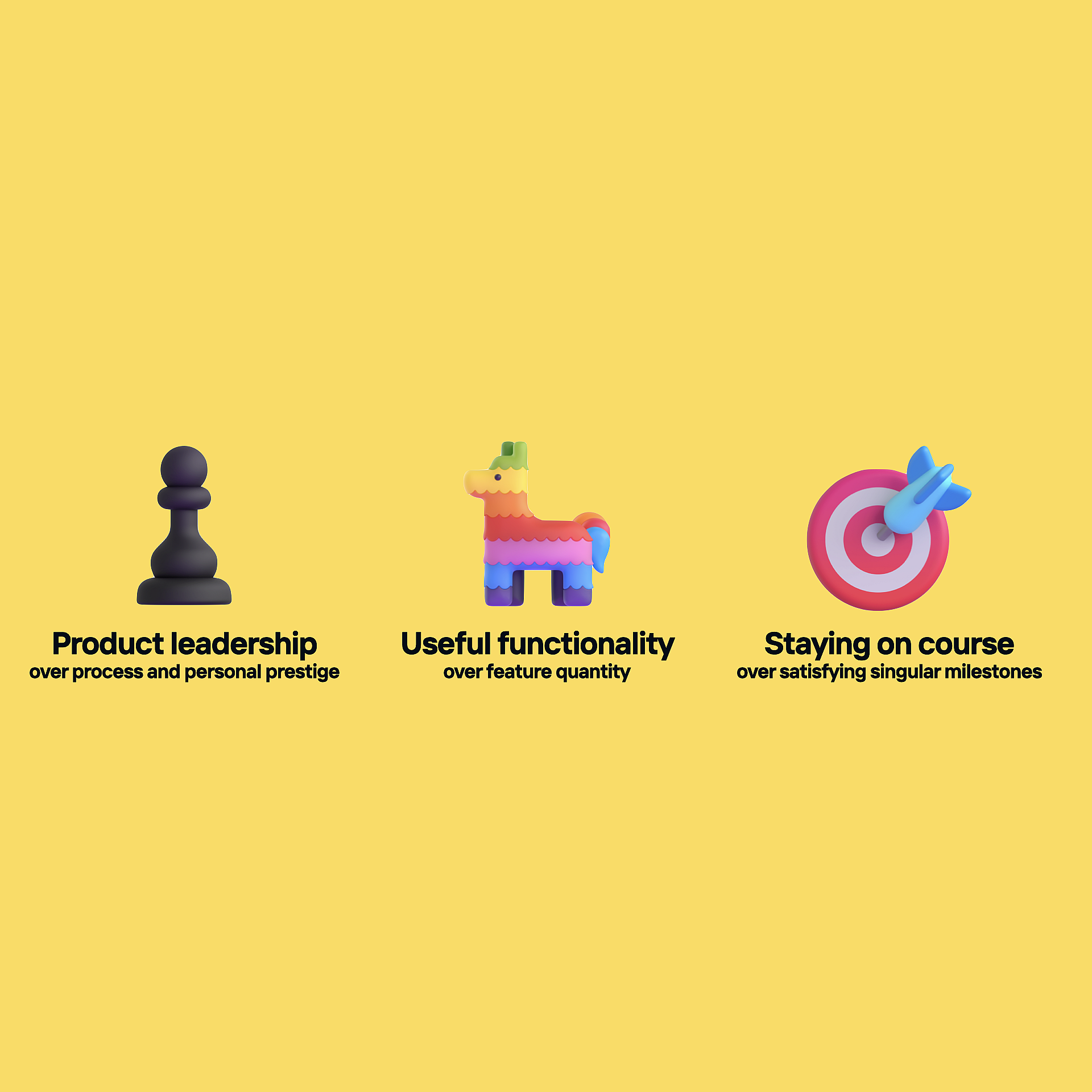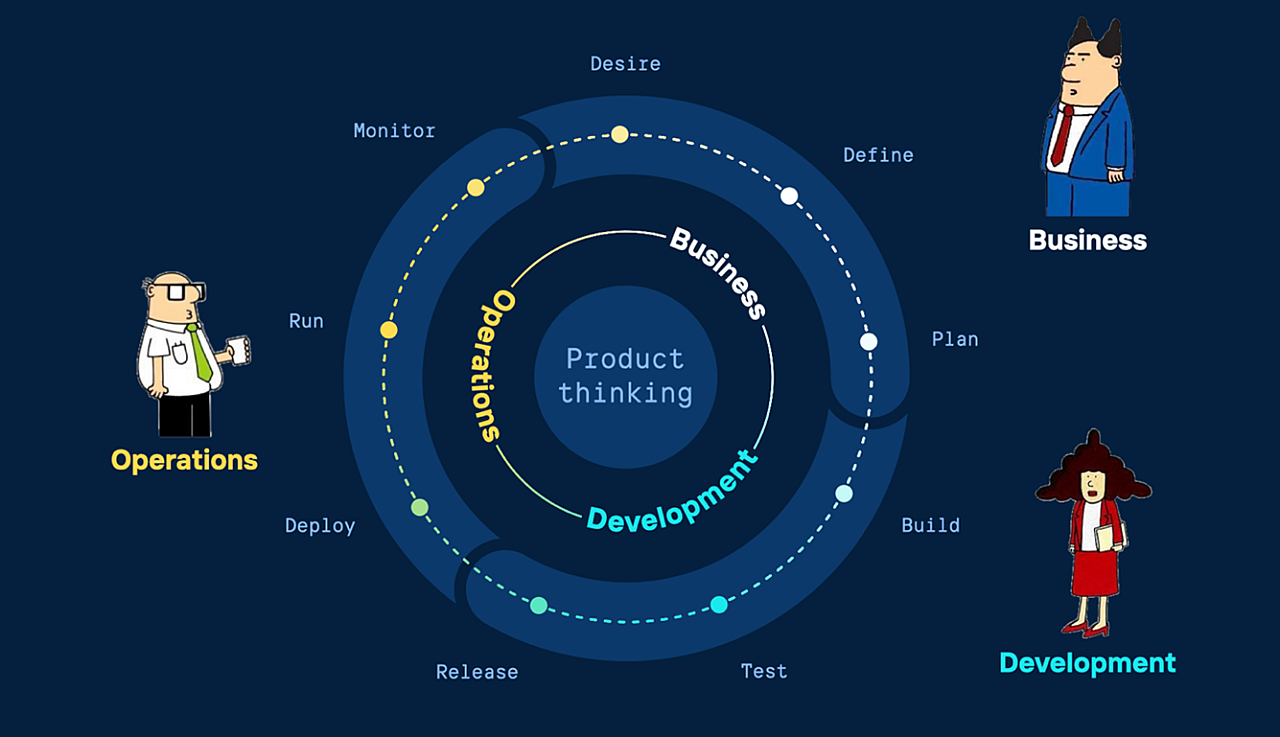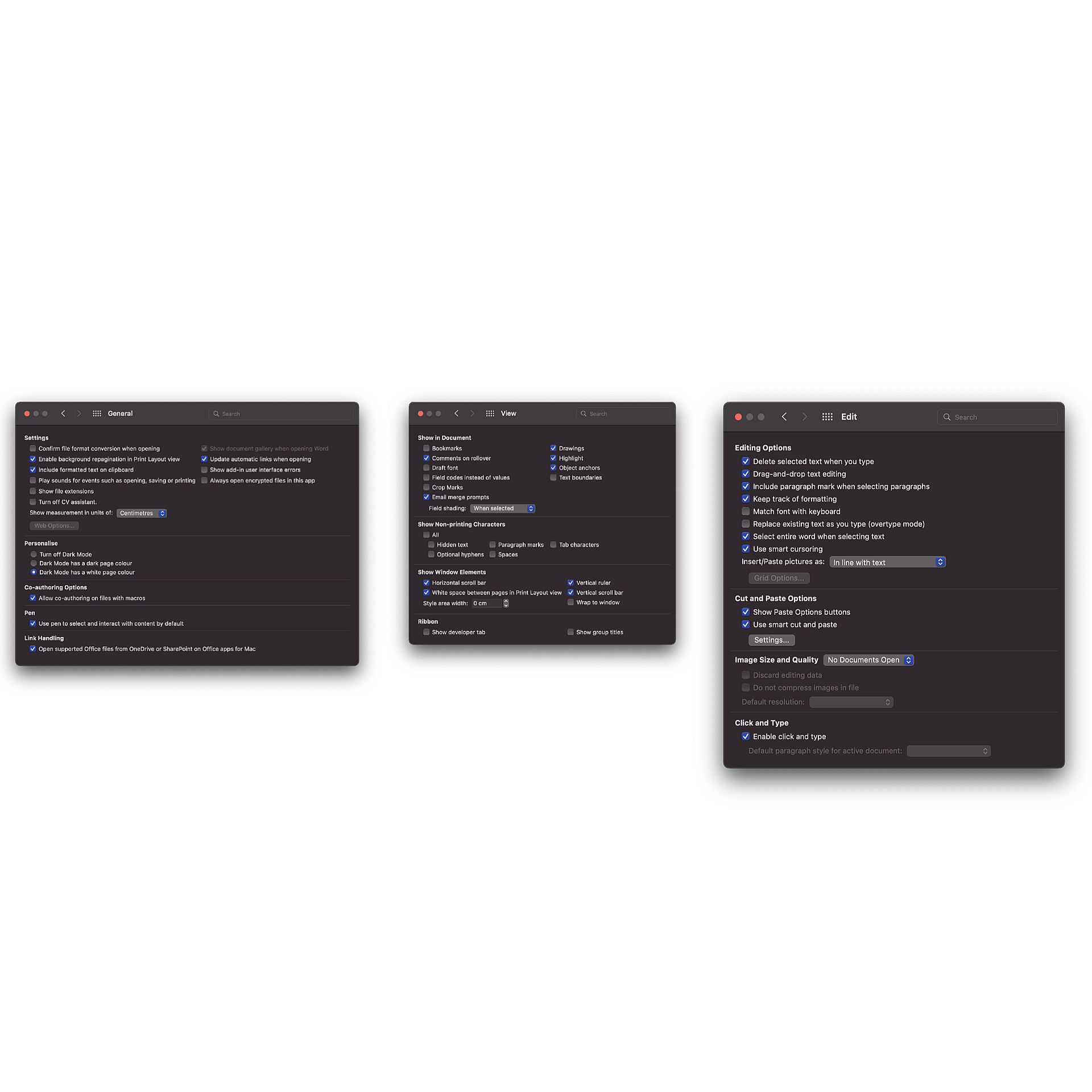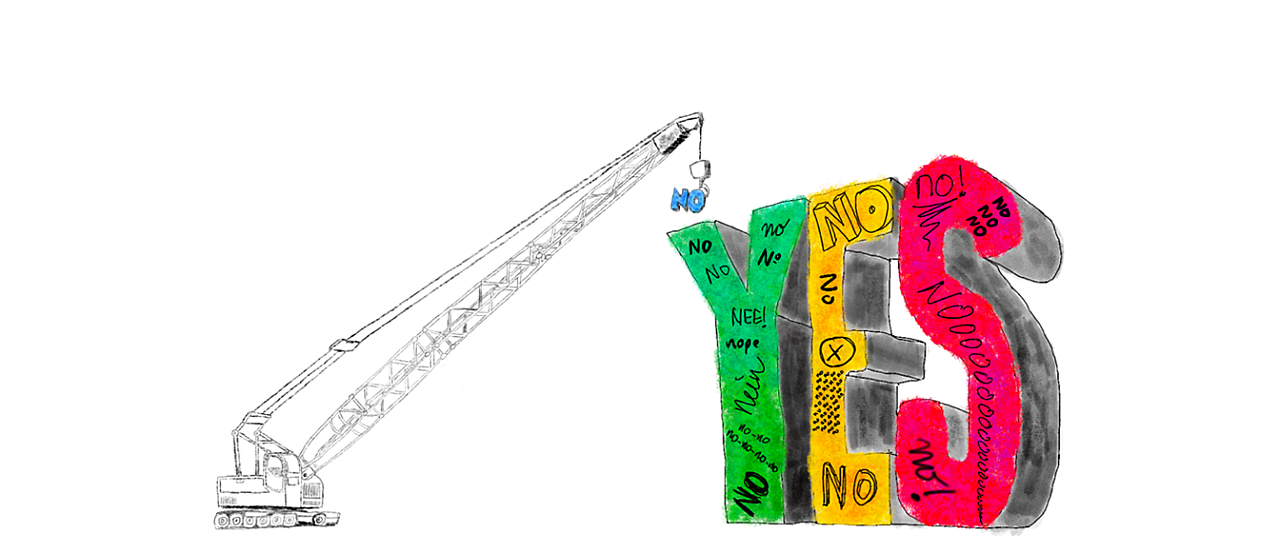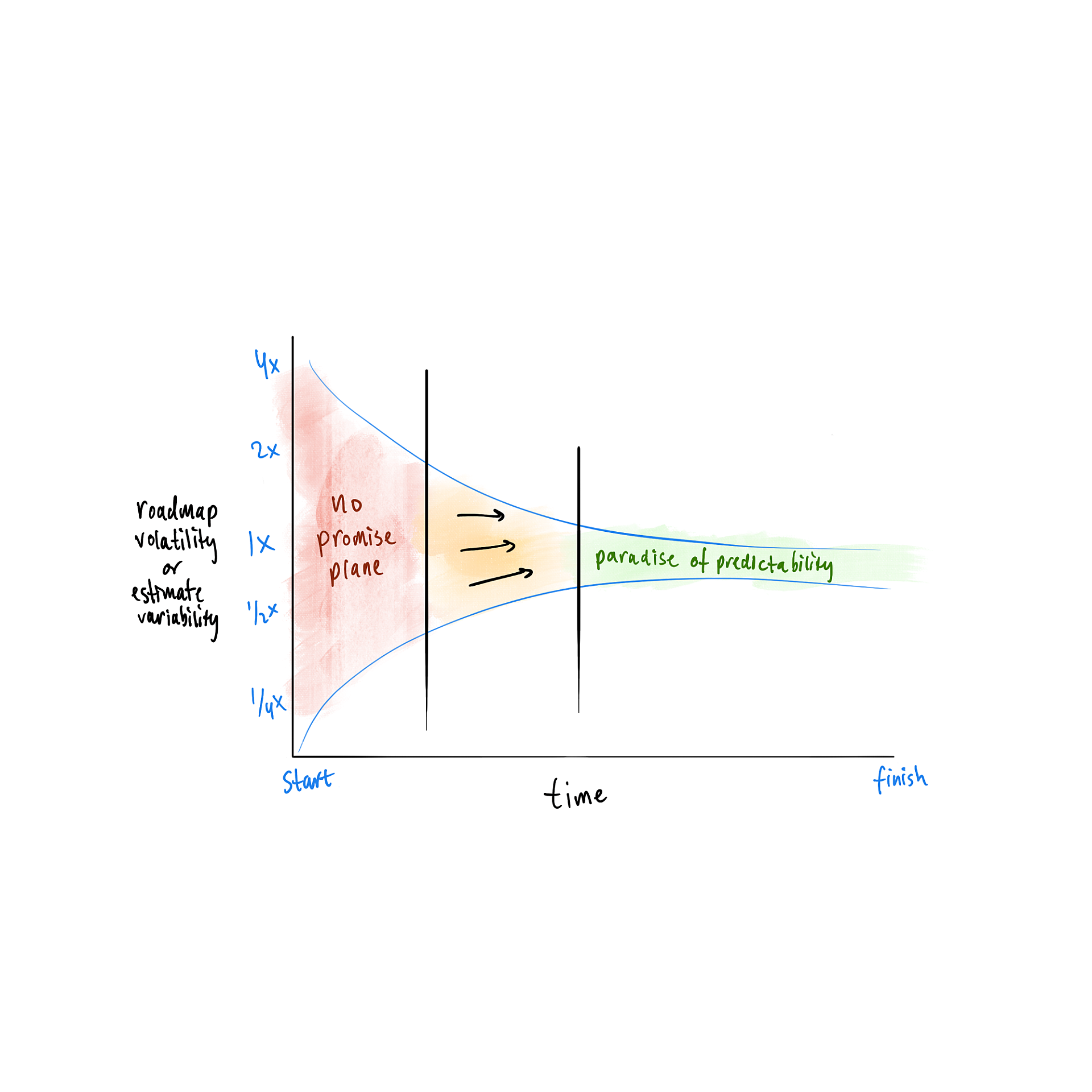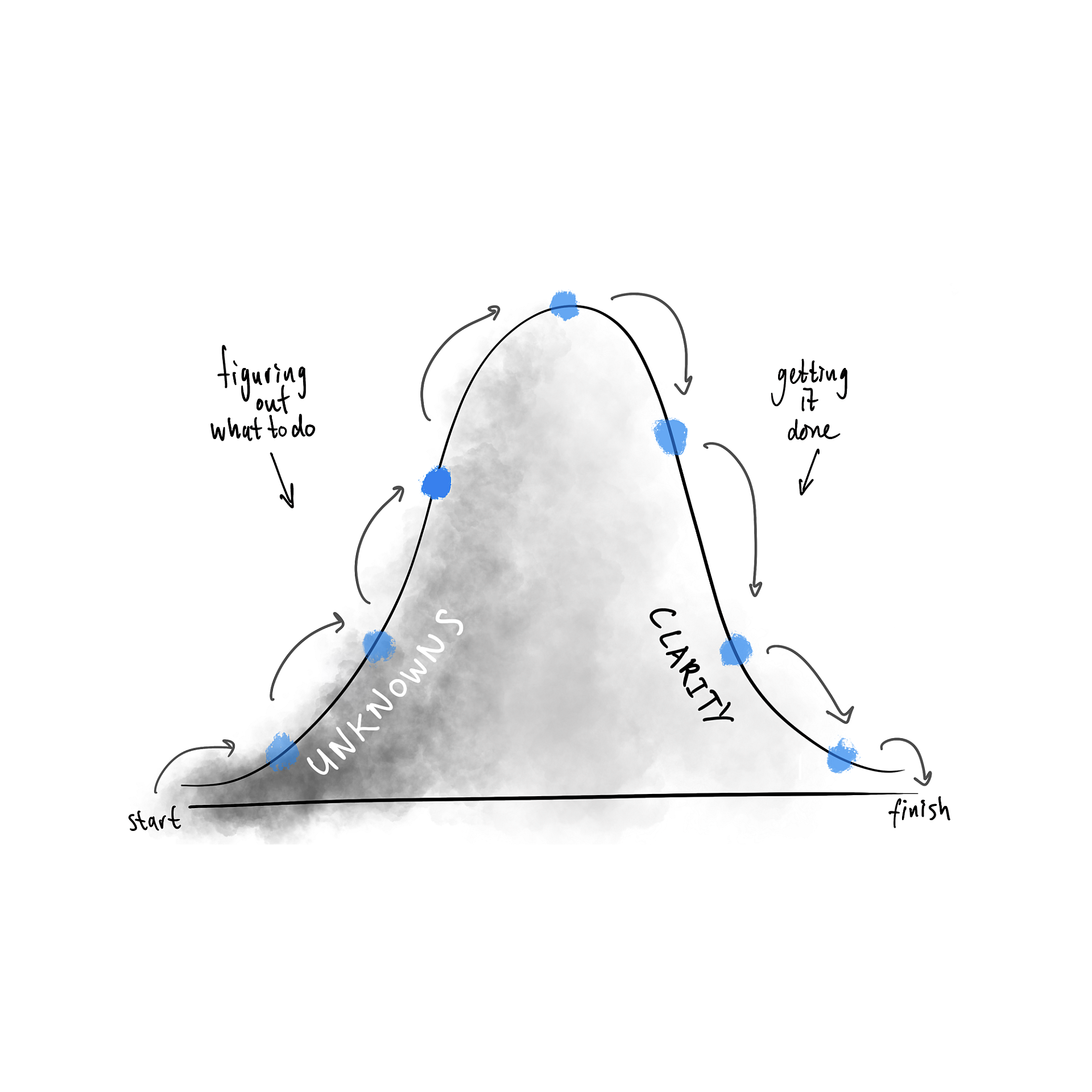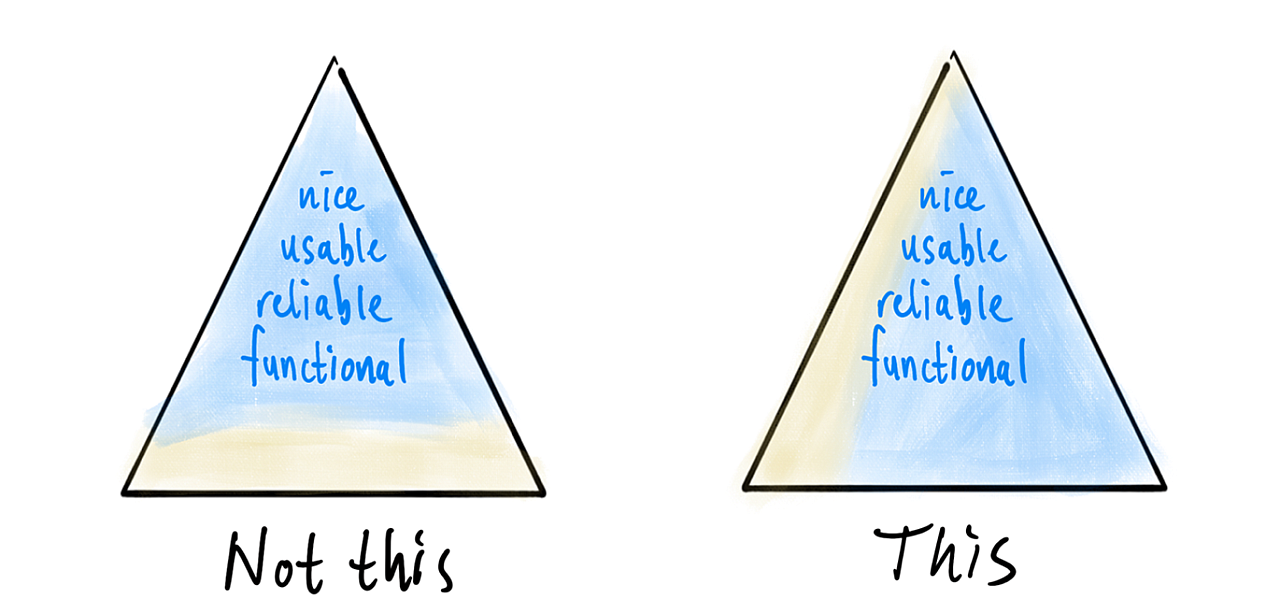By the end of this article, which is based on a corresponding talk at DevOpsDays Amsterdam 2022, you will better understand that:
- Many software projects and teams are hindered by dark patterns in product ownership, such as a lack of product thinking;
- Product thinking involves consistently making many tough decisions while maintaining good relationships with a multitude of stakeholders from business, development, and operations;
- Three principles are fundamental to sound product thinking.
Product thinking principles
Virtually each mature framework for agile software development, such as Scrum or SAFe, recognizes the need for product ownership and/or product management. Both entail having product features described, prioritized, and mapped in time on a continuous basis — aspects of software production that are broadly embraced as essential input for successful delivery of valuable software.
The role played by the average product owner or product manager leaves a lot to be desired. Some consider themselves outside — or worse, above — their team and, in their self-sequestering, form lonely bottlenecks. Some actually lack mandate so merely act like spokespeople for the business. Others lack a consistent, long-term product vision, or they act as glorified scrum masters or agile coaches, fixating on process while forgetting product. And finally, most exert so much focus on new features that they virtually ignore the importance of non-functionals. In short, product thinking is missing. Three principles are fundamental to sound product thinking:


